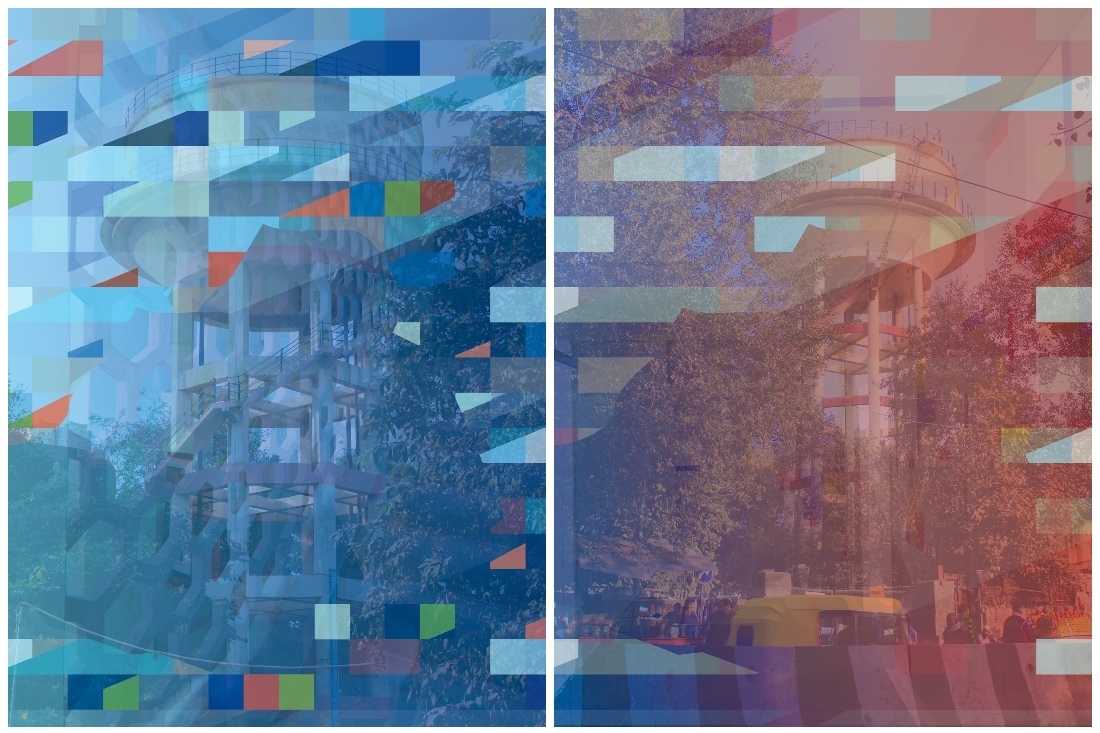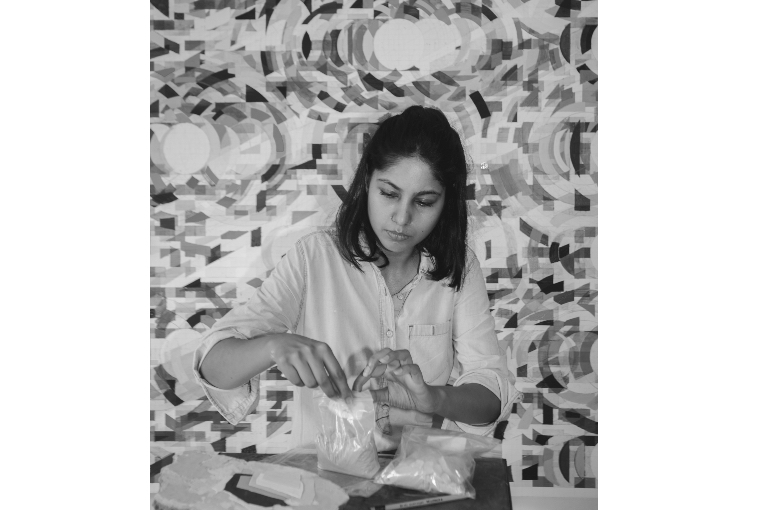
Fractal 2, 2020; Digital Drawing for Lenticular Print; Part 1& 2

Fractal 2, 2020; Digital Drawing for Lenticular Print; Part 1& 2
Tanya Goel is a painter whose work is deeply involved with the science of colour and an analytical approach to Modernism, both within the fine arts and how it has particularly impacted the fabric of her home city, New Delhi. Her newest body of work, titled Pause in a Flicker, was originally conceived for the Julius Baer Lounge at the Art Dubai, 2020. Even though the art fair was cancelled, Tanya persevered and completed the body of work this month. The project virtually creates the experience of looking at artworks made using lenticular printing, a technology in which lenticular lenses are used to produce printed images with an illusion of depth, or the ability to change or move as the image is viewed from different angles.
Pause in a Flicker is now available on Nature Morte’s online viewing room. We connected with her to know more about her body of work and the future.
What inspired the thought behind Pause in a Flicker?
One of the components of my commission for the Julius Baer Lounge at Art Dubai, 2020, was making an interactive installation for the entrance/façade of the lounge. The work for this façade emerged from a comparative study of modernist form found in architecture and city planning of Europe, the U.A.E, and South Asia. While the foundations for modernity in Western Europe were laid in the 1900s, the U.A.E only encountered modernity in the 1950s, closer to the time South Asia started to realise its first modern manifestations.
Pause in a Flicker, on the other hand, was conceived as a virtual show, where the works exist only in the virtual realm. Amidst the lockdown, we didn’t have access to the physical lenticular prints, so we re-envisioned a virtual experience that translates the physical act of looking at lenticulars within the space of the screen. The most exciting features of this show, for me, is the ‘view in room’, which allows the viewer to interact with and move the lenticular from left to right, and tap away at it to shift the image, simulating the actual experience of viewing a physical lenticular.
You ventured into the realm of photography for the first time and started with your own paintings, using photographic details of them as the first layer of the lenticular prints. What made you take this route?
I have always been interested in how we retain and store the plethora of images that we consume, what happens to these images in our brain/mind, and how our memory stores them. How do we process, consuming a surplus of images — whether they be synthetic, still or moving — that the digital devices are enabling today? Does a surplus of images make for an infinite overlapping of images, which then negate all content, context, and form of the individual image, in our mind, hence, creating a noise/static and void?
What was your creative process?
The process of lenticular printing requires physical stacking, an overlay and transfusion of different images, which is similar to the manner in which my memory records and archives the surplus of images that I consume — folding one image into the next, drawing one from within another, obscuring the definition of form, content and context, while also blurring the borders that compartmentalise time, place and space. So, in order to illuminate the nuances and similarities in the various manifestations of form in modernist architecture as found in Western Europe, the U.A.E, and South Asia, I felt that the technology of lenticular printing was suitable.
What do you want the audience to take away from your show?
The goal, with this show, was just to provide a brief moment to levity to the audience via the relatively deceptive, elusive and optic nature of colour. What interests me about lenticulars is that they require active participation/movement on part of the viewer, to complete the act of image-making, making the work of art, truly, interactive!
We are all going through extremely challenging times. What kind of change do you anticipate in your industry post lockdown and what changes should be made?
The virus has paused, the cyclic rhythm of time, melting away all existing notions of time and displacing the value of an ‘8 hour day’. I think for me, the answer lies in questioning, ‘what is time’, and how do I bide my time. This being said, Marx was a poet, and capitalism has already mutated.
How has the pandemic affected you personally?
Mostly I have metamorphosed into my couch.
Lastly, what's next?
I don’t know and the mystery of not knowing, keeps me intrigued.
Text Hansika Lohani Mehtani
Images Tanya Goel & Nature Morte

The artist, Tanya Goel